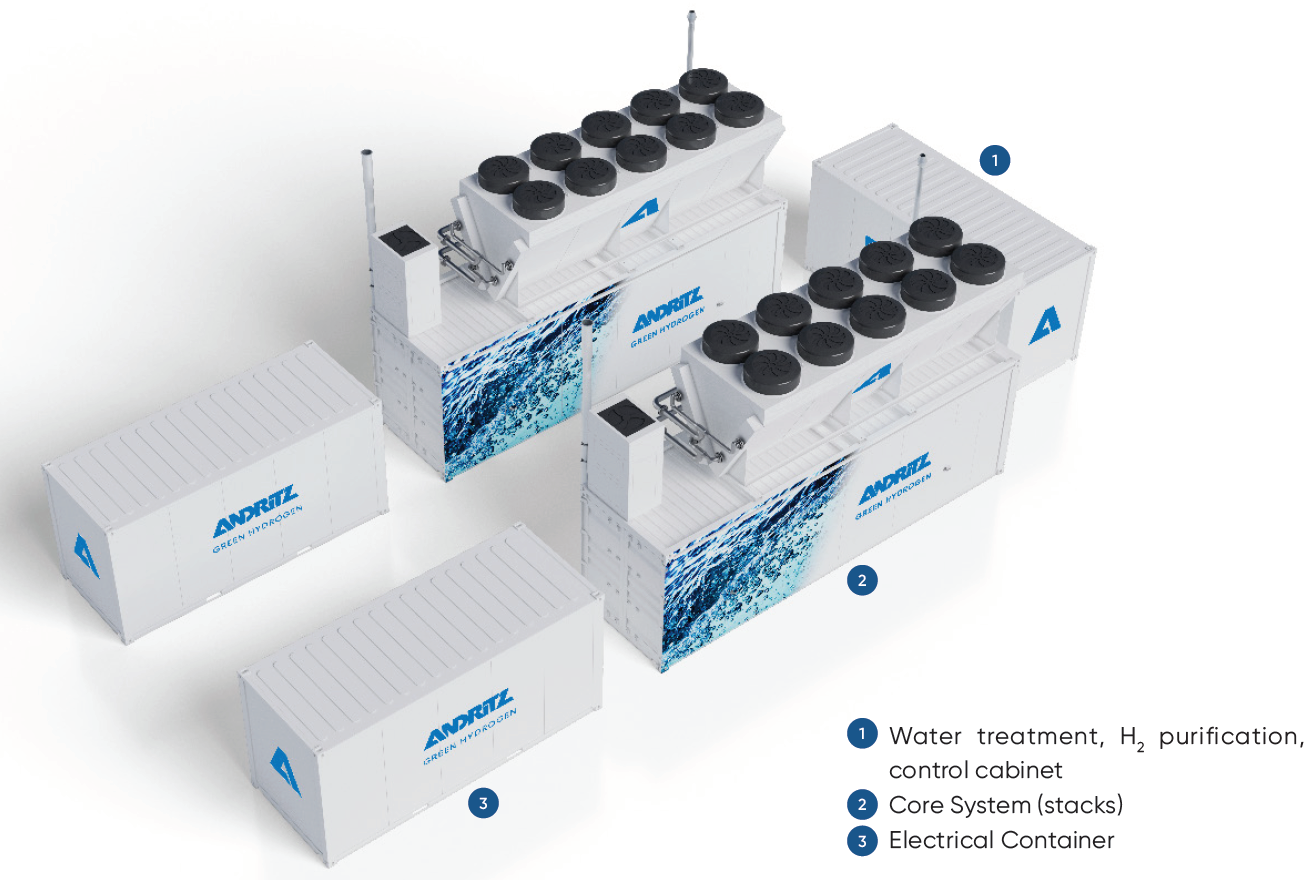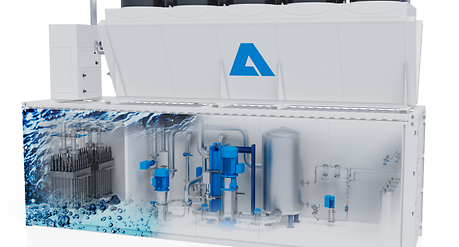What are the advantages of the PEM electrolyzer?
Stack operation just with water (no lye circulation)
Fast cold start-up
High outlet pressure.
PEM (Proton Exchange Membrane) electrolyzers are devices that use an electrolytic process to split water into hydrogen and oxygen gases. They consist of a membrane, which acts as an electrolyte, and two electrodes. When an electric current, produced by a renewable source, is applied, water molecules are dissociated into oxygen and self-pressurized hydrogen gas. PEM electrolyzers are gaining prominence in the market for their high energy efficiency, fast response times, ability to operate at low temperatures and versatile deployment in various application, making them a promising technology for hydrogen production and energy storage.

Example of 2 x 2.5MW (up to 1000 Nm³/h H₂) PEM plant
Plug-and-play solution with modular containers
2.5MW PEM module
Stack operation just with water (no lye circulation)
Fast cold start-up
High outlet pressure.

